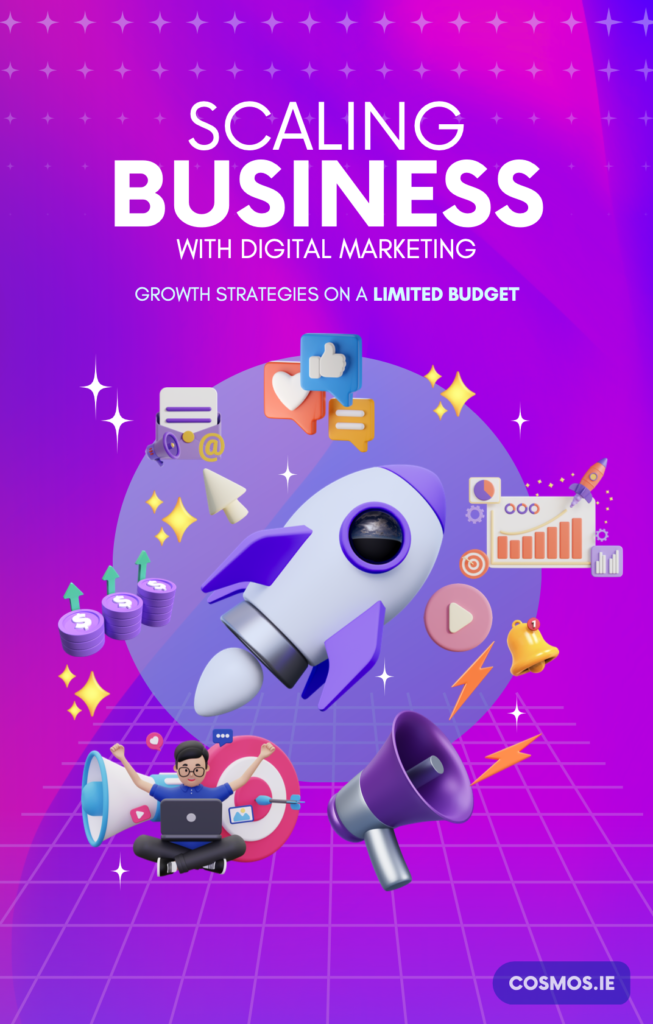Email engagement is more than just a metric; it’s a vital pathway to growth and success for small businesses. Yet, achieving high engagement rates can be a daunting task, especially when resources are limited. Are your emails being overlooked or lost in the clutter?
This article isn’t just another addition to your reading list; it’s a tailored guide designed for you.
Let’s explore the various strategies that will help to transform your emails from basic communications to powerful tools for customer engagement and conversion.

- What is Email Engagement?
- 10 Practical Tips to help enhance your Email Engagement Rate
- 1. Crafting a Warm Welcome
- 2. Subject Lines that Spark Interest
- 3. Mastering Pre-Header Text
- 4. Call to Action (CTA) Excellence
- 5. Writing Engaging, Relatable Content
- 6. Leveraging Transactional Emails
- 7. Experiment with A/B Testing
- 8. Mobile-Responsive Design Matters
- 9. Personalisation for Maximum Impact
- 10. The Power of Segmentation
- Enhance Data means better Email Engagement
- FAQs
What is Email Engagement?
Email engagement encompasses the interactions and responses your emails generate from your recipients. It’s not merely about sending messages; it’s about crafting emails that captivate readers, urging them to click, read, and take desired actions. An engaged audience translates to increased open rates, higher click-through rates, and ultimately, improved conversions.

E-Book: SCALING BUSINESS
WITH DIGITAL MARKETING
GROWTH STRATEGIES ON A LIMITED BUDGET
- Gain an edge with our eBook
- Your quick guide to digital excellence
10 Practical Tips to help enhance your Email Engagement Rate
1. Crafting a Warm Welcome
Every journey begins with a warm welcome, and your email campaigns are no exception. The welcome email serves as your digital handshake, setting the tone for future interactions. Craft a personalized and compelling welcome email that not only expresses gratitude for your subscriber’s interest but also provides a glimpse of what they can expect from your emails.
2. Subject Lines that Spark Interest
Subject lines are the gatekeepers of your emails. Craft subject lines that evoke curiosity, urgency, or intrigue, compelling recipients to click open. Employ A/B testing to discover the subject lines that resonate most with your audience.
3. Mastering Pre-Header Text
The often overlooked pre-header text is a valuable piece of real estate in your email. Use it wisely to complement your subject line and provide a sneak peek of your email’s content. This can significantly impact your open rates.
4. Call to Action (CTA) Excellence
A powerful Call to Action (CTA) can make or break your email’s effectiveness. Design visually appealing CTAs that guide your readers towards desired actions, be it making a purchase, signing up, or exploring your website.
5. Writing Engaging, Relatable Content
Inject personality into your email copy. Write in the way that you’re having a conversation with your friend. Engaging, relatable content resonates more deeply with your audience and increases the likelihood of clicks.
6. Leveraging Transactional Emails
Don’t underestimate the potential of transactional emails. These often overlooked communications, like order confirmations or shipping notifications, provide additional opportunities for engagement. Use them to cross-promote products, gather feedback, or offer exclusive discounts.
7. Experiment with A/B Testing
A/B testing is your secret weapon for refining email strategies. Test different elements, such as subject lines, visuals, or CTAs, to identify what resonates best with your audience. This iterative approach enhances engagement over time.
8. Mobile-Responsive Design Matters
With the majority of emails being opened on mobile devices, ensuring your emails are mobile-responsive is paramount. A seamless mobile experience encourages recipients to engage regardless of their device.
9. Personalisation for Maximum Impact
Personalization isn’t just about using a recipient’s name. Dive deeper by tailoring content based on their preferences, past interactions, or purchase history. This level of customisation creates a more meaningful connection.
10. The Power of Segmentation
Segmenting your email list allows you to send targeted, relevant content to specific groups of audiences. Tailored messages resonate more strongly, leading to higher engagement rates. Divide your audience group based on demographics, behaviour, or interests.
Enhance Data means better Email Engagement
As you embark on your journey to heightened email engagement, remember that data is your ally. Regularly analyze your email performance, diving into metrics like open rates, click-through rates, and conversions. Use this data to refine your strategies and cater to what your audience truly craves.
Don’t forget to share!
Share this article with your fellow small business owners who are eager to elevate their email engagement.
In conclusion, the key to improving email engagement rates lies in a mix of creativity, strategic planning and data-driven decision-making. By implementing these practical tips, you’re well on your way to creating email campaigns that not only motivate but generate meaningful engagement and conversions.
Want a guidance about effectively running a campaign, contact us at
FAQs
1. Which email marketing service is the best?
While there are numerous email marketing services available, the best choice depends on your business’s unique needs. Look for platforms that offer features like user-friendly interfaces, automation capabilities, robust analytics, and scalability. It’s wise to consider services like MailChimp, Constant Contact, or ConvertKit that cater to small businesses with features tailored to their requirements.
2. What is the average email engagement rate?
Average email engagement rates vary by industry but generally hover around 20-30% for open rates and 2-3% for click-through rates. It’s important to measure your performance against your specific industry to get an accurate picture.
3. How can email marketing benefit small businesses?
Email marketing can help small businesses by offering a cost-effective way to reach and engage with their target audience easily. It allows personalised communication, increases brand recognition, and drives conversions. With tailored strategies, small businesses can create a strong online presence and compete effectively in the digital landscape.
4. What are the various types of email marketing?
The four primary types of email marketing are:
Promotional emails: Showcase products, services, or offers.
Transactional emails: Confirm orders, provide receipts, or send shipping notifications.
Relational emails: Nurture relationships through updates, newsletters, or customer stories.
Re-engagement emails: Encourage inactive subscribers to re-engage with your content or offers.
5. How is email engagement measured?
Email engagement is measured through various metrics, including open rates, click-through rates (CTR), conversion rates, bounce rates, and unsubscribe rates. These metrics provide insights into how recipients are interacting with your emails and whether your content is resonating effectively.
